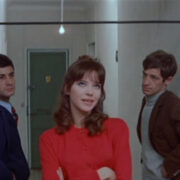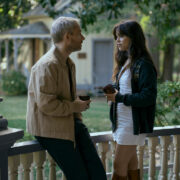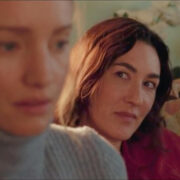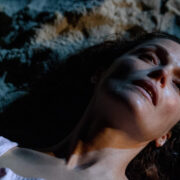Video Dispatches: WANDA, A FACE IN THE CROWD & THE WHOLE TOWN’S TALKING
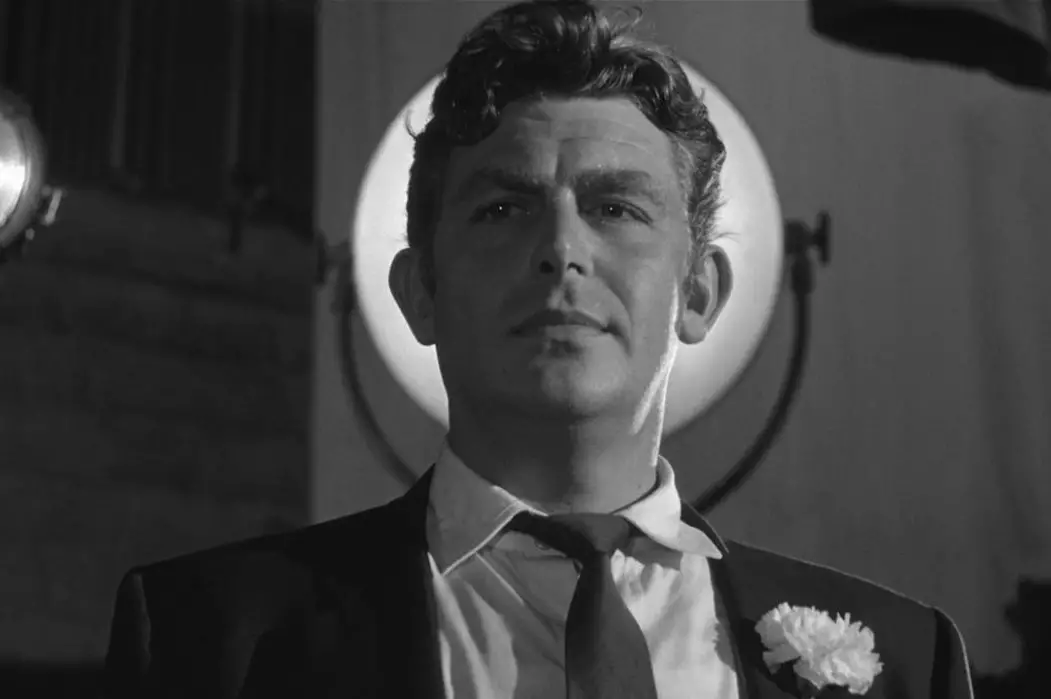
Midwesterner, movie lover, cinnamon enthusiast.
Video Dispatches is a regular digest of recent home video releases.
Wanda (1971) – Criterion Collection
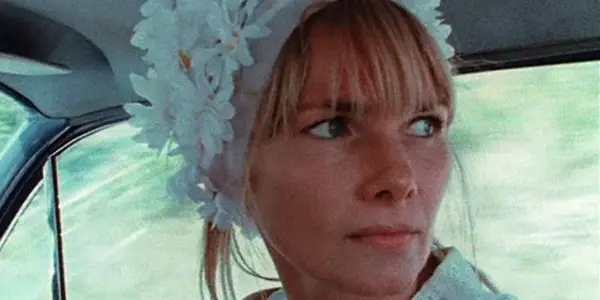
Last July, a new print of Barbara Loden’s Wanda started making the rounds in big-city cinemas after decades of obscurity. I first saw the film during a grad seminar in 2013 and I honestly don’t remember how my professor sourced it — previous to this release, I know it was accessible via shitty YouTube uploads and outrageously-priced import DVDs. Despite less-than-ideal presentation of a film I had never previously heard of, it blew my hair back.
Though it currently has the reputation of a masterpiece, Wanda wasn’t exactly a critical darling — not all that surprising for a film this interested in banal details and ugly landscapes, coming from an unestablished filmmaker.
“She’s an attractive girl but such a sad, ignorant slut that there’s nowhere for her and the picture to go but down, and since, as writer-director, Miss Loden never departs from the misery of the two stunted characters, there are no contrasts,” Pauline Kael wrote at the time. “The movie is very touching, but its truths — Wanda’s small voice, her helplessness — are too minor and muted for a full-length feature.”
Kael ultimately saw it as a respectable first feature. Of course, it’s one of cinema’s unforgettable tragedies that she was never able to make another full-length film.
Andrew Sarris said her style oscillates between Michelangelo Antonioni and Federico Fellini, “[b]ut once Miss Loden stops sketching her environment and begins inhabiting it, her characterization comes to life. The museum shots of the milieu are superseded by intensive cross-cutting between two loners groping for each other across the infinite distances in the front seat of a moving car.”
He was much higher on the film than Kael, although ends his review saying “it is the extraordinary good fortune of Barbara Loden the director to have had Barbara Loden the actress to manipulate with such impulsive immediacy.”
Janus’ restoration of Wanda is a wishlist project for a legion of film fans and will help introduce an important film — as a link of New Hollywood cinema, woman-directed cinema and simply as an expressive piece of art — to multiple generations. And Criterion have done well to surround the main event with, among other features, one of Loden’s two short films, The Frontier Experience, reminding us that Loden wasn’t the one-and-done wonder she’s often painted as.
A Face in the Crowd (1957) – Criterion Collection

Criterion have also released a film by the man whose shadow loomed large over Loden’s career — her husband Elia Kazan’s A Face in the Crowd, a satire of commercialization, America’s popular and gullible consciousness and TV’s relationship to it all. After a radio broadcaster discovers Arkansas drifter “Lonesome” Rhodes — a platform for Andy Griffith’s underexplored dexterity — he catapults into fame as America’s most unlikely spokesperson.
As April Wolfe notes in the included essay, there was a mercurial rise in homes with TVs in the 1950s, from 12% at the turn of the decade to 80% at the time of this film’s release. For a film so reactionary, Kazan and usual writing collaborator Budd Schulberg created something incredibly articulate.
Although Sarris, in his piece for Film Culture, claimed the film was overly-articulate, claiming its overplayed hand means it “degenerates into preposterous liberal propaganda.” Of course, the rest of his review highlights current America and media’s place in contemporary culture as unthinkable in 1957. After commenting on Rhodes’ influence on a political campaign, Sarris wrote the following:
“The improbability of this situation weakens the arguments of the film. Kazan and Schulberg are attacking straw men. The trend in American politics is not toward a sugarcoating of unpalatable issues but toward a blurring of all issues. The television medium has become the refuge not of vulgar paranoiacs but of mediocre opportunists.”
Clearly, A Face in the Crowd has mostly aged well as American satire. But besides political extrapolations, I was struck by how well Kazan and Schulberg captured media folks’ ability to commodify people’s personality, distilling it to a direct, simple essence until that person is rendered into a recognizable, reliable brand.
With each new media platform (blogs and Twitter accounts, more recently), we see people scoring book deals and TV shows that promise followers more of the same … until, as Walter Matthau’s educated reporter points out, we’ve moved onto the next brand of “authentic” content.
Though I found A Face in the Crowd to be more profound than Sarris did — who, it should be noted, called it 1957’s most interesting Hollywood film on account of incredible performances from Matthau, Patricia Neal, and Anthony Franciosa — I do think it lives on the razor’s edge between seared and overcooked satire.
On average, satires that arc into weighty drama are a poor management of tone. I couldn’t help but view Kazan’s film with a fellow 1957 media satire recently released on Blu-ray, Frank Tashlin’s Will Success Spoil Rock Hunter?, in the back of my mind. While it’s lost a few teeth since its release, I admire, in the abstract, that Tashlin never dips from the ridiculous to the self-serious. But what Kazan and Schulberg lack in tonal discipline, they make up for with terrifying and lasting insights into the cult of personality.
The Whole Town’s Talking (1935) – Twilight Time
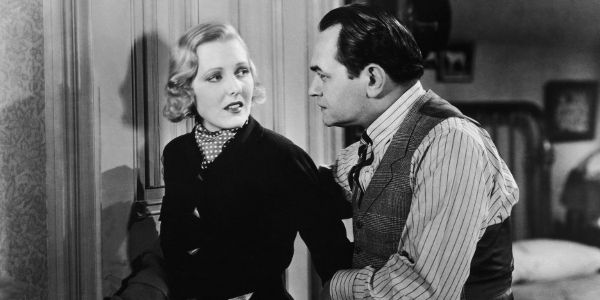
In the booklet essay of Twilight Time’s new release of John Ford’s Edward G. Robinson showcase The Whole Town’s Talking, Julie Kirgo calls the film “that rare bird in Ford’s work: a contemporary urban comedy.” While divergent in genre, Ford feels as comfortable in the city as he does on the range. It also helps that he has Robinson, playing a double performance, who miraculously feels as comfortable with himself as an imaginary screen partner as he does with another actual human being.
While watching, I was reminded of a bonus feature from the 1998 release of Disney’s The Parent Trap that broke down the technical innovation used to pit Lindsay Lohan in scenes across from herself. Here, back in 1935, Ford was seamlessly achieving the same effect with Robinson, and it’s a testament to both the actor and director that I routinely forgot that these scenes weren’t two separate actors.
I have no idea how Ford technically achieved this effect, and it’s exactly the type of thing a boutique home video label should be trying to illuminate with supplemental features, but Twilight Time miss an opportunity by presenting only the film. However, this is a welcome title to the label’s catalogue, and more importantly, to a market that it was previously missing from. It’s a genuinely good time at the movies — the first 45 minutes are absolutely whip-cracking — featuring an unmissable, wide-ranging performance from Robinson.
Does content like this matter to you?
Become a Member and support film journalism. Unlock access to all of Film Inquiry`s great articles. Join a community of like-minded readers who are passionate about cinema - get access to our private members Network, give back to independent filmmakers, and more.


